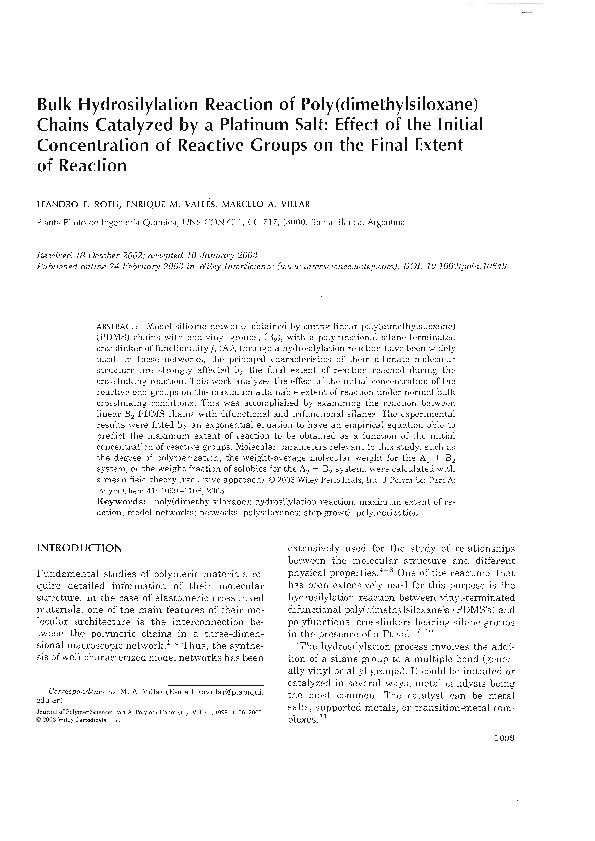Artículo
Bulk hydrosilylation reaction of poly(dimethylsiloxane) chains catalyzed by a platinum salt: Effect of the initial concentration of reactive groups on the final extent of reaction
Fecha de publicación:
24/02/2003
Editorial:
John Wiley & Sons Inc
Revista:
Journal of Polymer Science Part A: Polymer Chemistry
ISSN:
0887-624X
Idioma:
Inglés
Tipo de recurso:
Artículo publicado
Clasificación temática:
Resumen
Model silicone networks obtained by curing linear poly(dimethylsiloxane) (PDMS) chains with end-vinyl groups, (B2), with a polyfunctional silane-terminated crosslinker of functionality f, (Af), through a hydrosilylation reaction have been widely used. In these networks, the principal characteristics of their ultimate molecular structure are strongly affected by the final extent of reaction reached during the crosslinking reaction. This work analyzes the effect of the initial concentration of the reactive end groups on the maximum attainable extent of reaction under normal bulk crosslinking conditions. This was accomplished by examining the reaction between linear B2 PDMS chains with difunctional and trifunctional silanes. The experimental results were fitted by an exponential equation to have an empirical equation able to predict the maximum extent of reaction to be obtained as a function of the initial concentration of reactive groups. Molecular parameters relevant to this study, such as the degree of polymerization, the weight-average molecular weight for the A2 + B2 system, or the weight fraction of solubles for the A3 + B2 system, were calculated with a mean field theory (recursive approach).
Archivos asociados
Licencia
Identificadores
Colecciones
Articulos(PLAPIQUI)
Articulos de PLANTA PILOTO DE INGENIERIA QUIMICA (I)
Articulos de PLANTA PILOTO DE INGENIERIA QUIMICA (I)
Citación
Roth, Leandro E.; Vallés, Enrique M.; Villar, Marcelo Armando; Bulk hydrosilylation reaction of poly(dimethylsiloxane) chains catalyzed by a platinum salt: Effect of the initial concentration of reactive groups on the final extent of reaction; John Wiley & Sons Inc; Journal of Polymer Science Part A: Polymer Chemistry; 41; 8; 24-2-2003; 1099-1106
Compartir
Altmétricas




